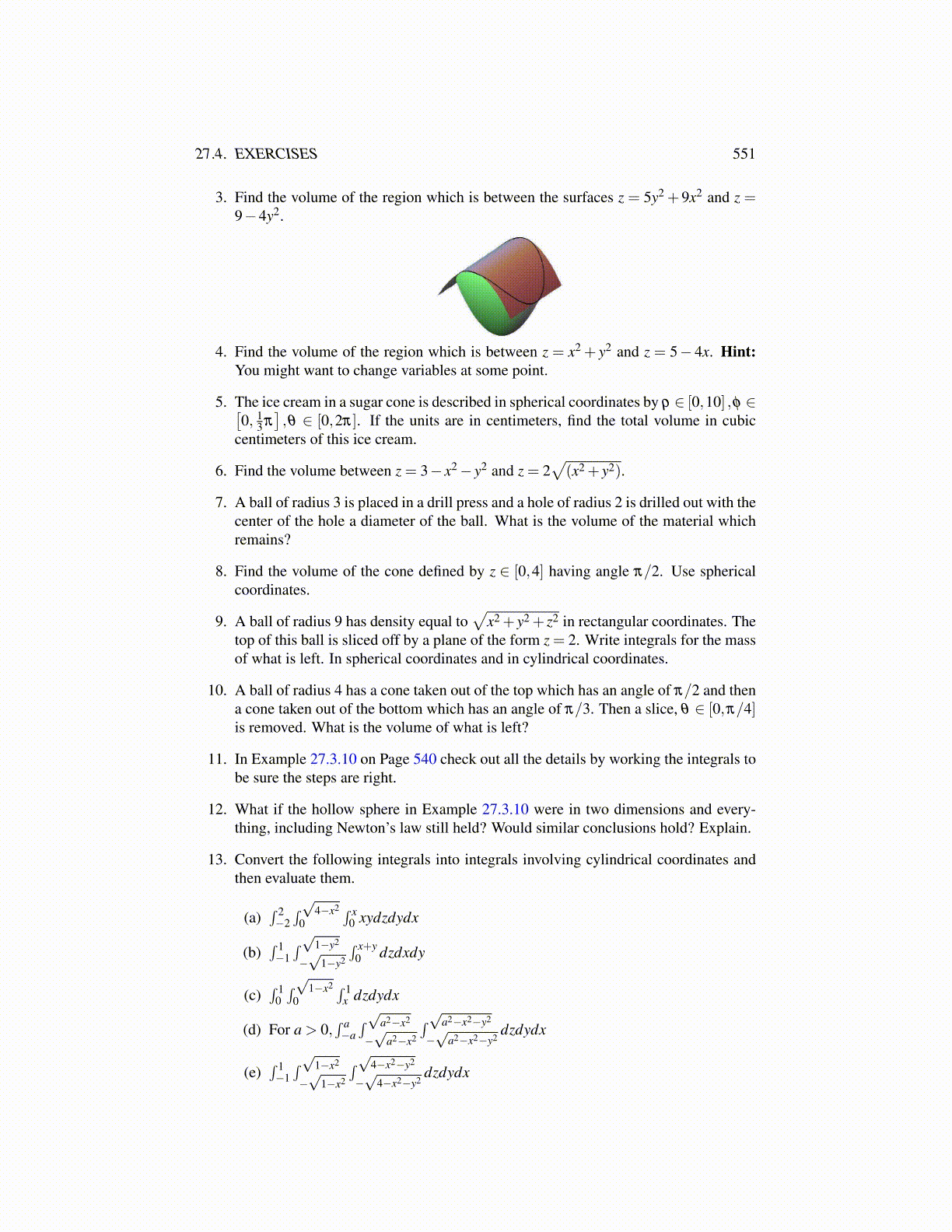
27.6. EXERCISES 551
Therefore, ∂ (x,y)∂ (u,v) is
det
( 1v+1 − u
(v+1)2
vv+1
u(v+1)2
)=
u
(v+1)2 .
Therefore, the area of this quadrilateral is∫ 2
1/2
∫ 3
1
u
(v+1)2 dudv =43.
27.6 Exercises1. Verify the three dimensional volume increment in spherical coordinates is
ρ2 sin(φ)dρdφdθ .
2. Find the area of the bounded region R, determined by 5x+ y = 1,5x+ y = 9,y = 2x,and y = 5x.
3. Find the area of the bounded region R, determined by y+2x = 6,y+2x = 10,y = 3x,and y = 4x.
4. A solid, R is determined by 3x+ y = 2,3x+ y = 4,y = x, and y = 2x and the densityis ρ = x. Find the total mass of R.
5. A solid, R is determined by 4x+2y= 1,4x+2y= 9,y= x, and y= 6x and the densityis ρ = y. Find the total mass of R.
6. A solid, R is determined by 3x+y= 3,3x+y= 10,y= 3x, and y= 5x and the densityis ρ = y−1. Find the total mass of R.
7. Find a 2×2 matrix A which maps the equilateral triangle having vertices at
(0,0) ,(1,0) ,and(
1/2,√
3/2)
to the triangle having vertices at (0,0) ,(a,b), and (c,d) where (c,d) is not a multipleof (a,b). Find the area of this last triangle by using the cross product. Next find thearea of this triangle using the change of variables formula and the fact that the areaof the equilateral triangle is
√3
4 .
8. Find the volume of the region E, bounded by the ellipsoid, 14 x2 + y2 + z2 = 1.
9. Here are three vectors. (4,1,2)T ,(5,0,2)T , and (3,1,3)T . These vectors determine aparallelepiped, R, which is occupied by a solid having density ρ = x. Find the massof this solid.
10. Here are three vectors. (5,1,6)T ,(6,0,6)T , and (4,1,7)T . These vectors determine aparallelepiped, R, which is occupied by a solid having density ρ = y. Find the massof this solid.
11. Here are three vectors. (5,2,9)T ,(6,1,9)T , and (4,2,10)T . These vectors determinea parallelepiped, R, which is occupied by a solid having density ρ = y+ x. Find themass of this solid.